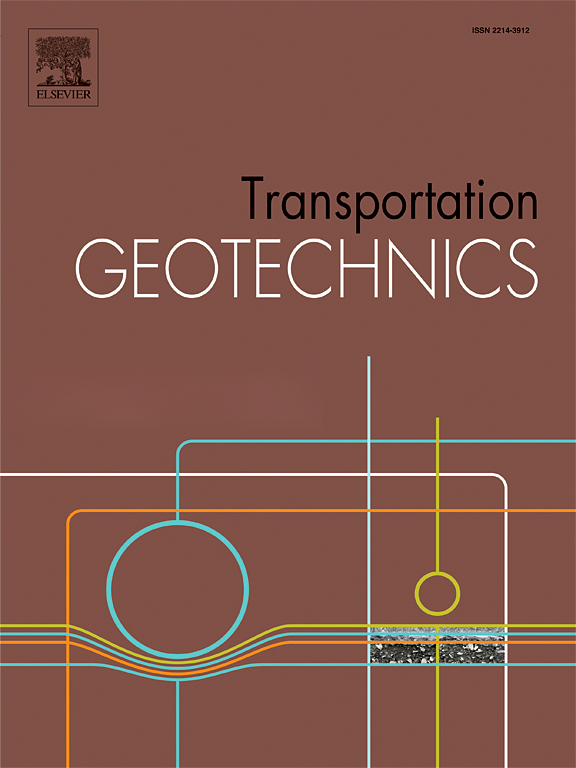The influence of pile–soil–pile interaction on the vertical response of end-bearing pile groups in soil on bedrock subjected to a vertical load at the soil’s surface
IF 4.9
2区 工程技术
Q1 ENGINEERING, CIVIL
引用次数: 0
Abstract
The influence of pile–soil–pile interaction on the vertical response of end-bearing pile groups when subjected to an incident wave field generated from a vertical load at the soil’s surface is investigated. A numerical model which allows for considering or disregarding the influence of pile–soil–pile interaction is adopted. Vertical end-bearing pile groups with different pile axial stiffness and pile-to-pile spacing are considered. This study shows that in contrast to floating piles in homogeneous soil, the interaction effects caused by wave scattering between the piles are important for end-bearing piles. These may either reduce or amplify the group response, depending on the wavelength in the soil, the spacing between the piles, the pile slenderness and the pile–soil stiffness ratio. The interaction between the piles which are aligned in the direction transverse to the propagation direction of the incident wave field is found to amplify the group response at certain frequencies. Reducing the pile spacing in this direction is found to influence the vertical vibration response of end-bearing pile group foundations considerably by shifting the amplification effects due to pile–soil–pile interaction to higher frequencies.
求助全文
约1分钟内获得全文
求助全文
来源期刊

Transportation Geotechnics
Social Sciences-Transportation
CiteScore
8.10
自引率
11.30%
发文量
194
审稿时长
51 days
期刊介绍:
Transportation Geotechnics is a journal dedicated to publishing high-quality, theoretical, and applied papers that cover all facets of geotechnics for transportation infrastructure such as roads, highways, railways, underground railways, airfields, and waterways. The journal places a special emphasis on case studies that present original work relevant to the sustainable construction of transportation infrastructure. The scope of topics it addresses includes the geotechnical properties of geomaterials for sustainable and rational design and construction, the behavior of compacted and stabilized geomaterials, the use of geosynthetics and reinforcement in constructed layers and interlayers, ground improvement and slope stability for transportation infrastructures, compaction technology and management, maintenance technology, the impact of climate, embankments for highways and high-speed trains, transition zones, dredging, underwater geotechnics for infrastructure purposes, and the modeling of multi-layered structures and supporting ground under dynamic and repeated loads.
 求助内容:
求助内容: 应助结果提醒方式:
应助结果提醒方式:


